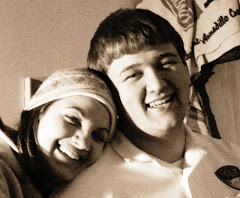Although our changing lifestyle for business and pleasure has become more on-the-go, it is this same on-the-go lifestyle that causes our current boom in technological advancement because businesses have expanded to require quick communication, people have become information dependant, and swift travel has become a must in both pleasure and business. It has taken centuries for our technology to advance this far, but it is quickly advancing even farther, and there is still a demand for even more advancements. It is our want and need of better tools and toys that has driven this technology boom.
Communication has grown from men carrying letters via horseback to our cell phones that can access the internet as well as make calls almost anymore. At first letters were slow, only being as fast as the man and horse that carry the letters. The next invention better from the horse born letter, was the telegraph which came in the early 1800s. This was not practical for every household and was used in stations that relayed messages. Though it was the telephone invention in 1876 that would change the way we communicate today. It was slow at first, but eventually phones became available in every household and now everyone has the opportunity to talk with almost anyone in the world when they want to. In 1969, the first network was created and thus the creation on the internet. It wasn’t until 1992 that the internet was offered to the public and no longer just for educational foundations and governments. Cell phones were first thought up in 1947, but the first cell phone wasn’t made until 1973. Phone companies became testing cell phones in 1979 but they weren’t approved by the FCC until 1982. And in 1999, the first full time internet was available on cell phones in
Not only did our way of communication become faster, but it also became more portable. When cell phones first came out, they were about the size of a brick, and almost just as heavy. When we carry our cell phones now, we almost never think of where they originated, or how they became the way they are. All we care about is the features that our phones have. When we look at our phones now, they are about the size of a deck of cards, and some are even smaller. It is the advancement of the computer chips and batteries that have made the ability for phone companies to make smaller phones.
With the advancement of our communication with our phones and internet, a new demand has arisen, a need to know. The internet and modern libraries are a vast source of information at anyone’s fingertips. The first libraries date all the way back to 1300-1200 BC, but these were reserved for nobleman and scholars. Public libraries didn’t become available to all classes until the mid nineteenth century. It was then that public libraries became available to everyone and thus provided people with almost any book ever written. The internet started as an experiment, but has quickly become an all access pass to almost anything you can think of, as long as you have a computer. The internet has not only become one of our main forms of communicating, but also our main form of getting information, even above a library. The internet has become so demanded, that it is even offered on our phones, and also wireless networks for laptops in different areas.
Not only has our form on communicating and getting information changed, but also how we travel. For the longest time, humans relied on their own two feet for travel, and it wasn’t until about 3700 to 3100BC that horses were first tamed. It is thought that chariots weren’t invented until around 3000BC, and thus travel increased even more. But at first horses and chariots were reserved for nobleman and kings. Though horses were probably also used on farms, and chariots were also used on the battle field. Men started thinking up other modes of transportation that did not rely on horses, but rather self propelled vehicles. Around 1335 there were a few ideas drawn up on self-propelled vehicles, one of these designs by Leonardo Da Vinci. It wasn’t until 1769 that the first self propelled vehicle was made, but it was a long way from a practical car. The first self-propelled vehicle to use an internal combustion engine wasn’t until 1807, though this was a very unsuccessful design. The first engine that runs on liquid gasoline wasn’t made until 1870. It wasn’t until 1886 that Henry Ford built his first automobile in
Since Henry Ford’s automobile, cars have come a long way. Our modern cars now have built in blue-tooth that allows us to us our phones thru our cars, and they even have built in GPS for navigation. These are only a couple of the features that our offered on our vehicles nowadays, but when automobiles first came out there weren’t any features offered. It was slow at first, but some of the first accessories offered in automobiles were headlights, windshield wipers and eventually air conditioning. At first, these were thought as luxury items, but now we take these few comfort items for granted. It has taken a couple thousand years for us to find better ways of getting around than just by walking, but even today we still like to walk places.
Our technology has come a long way in these past decades, and it still has a long way to go. Our demand for better tools and toys will drive the development of better and more efficient technologies. Our cars will become more powerful, better fuel efficiency, and safer. While our phones will become smaller, faster internet, and someday all phones will have built in cameras, mp3 players, and internet access, instead of only a handful. And eventually all books and library databases will be available electronically, and paperbacks may be eliminated altogether.


